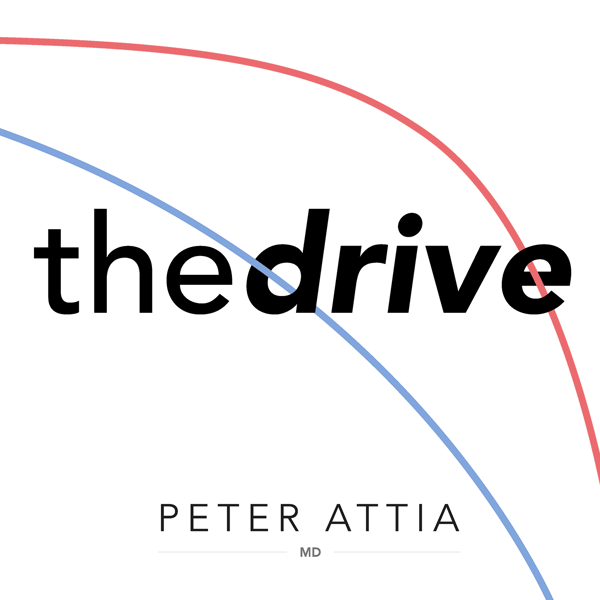#269 - Good vs. bad science: how to read and understand scientific studies
The Peter Attia Drive
Peter Attia, MD
4.7 • 7.3K Ratings
🗓️ 4 September 2023
⏱️ 111 minutes
🧾️ Download transcript
Summary
View the Show Notes Page for This Episode
Become a Member to Receive Exclusive Content
Sign Up to Receive Peter’s Weekly Newsletter
This special episode is a rebroadcast of AMA #30, now made available to everyone, in which Peter and Bob Kaplan dive deep into all things related to studying studies to help one sift through the noise to find the signal. They define various types of studies, how a study progresses from idea to execution, and how to identify study strengths and limitations. They explain how clinical trials work, as well as biases and common pitfalls to watch out for. They dig into key factors that contribute to the rigor (or lack thereof) of an experiment, and they discuss how to measure effect size, differentiate relative risk from absolute risk, and what it really means when a study is statistically significant. Finally, Peter lays out his personal process when reading through scientific papers.
We discuss:
- The ever-changing landscape of scientific literature [2:30];
- The process for a study to progress from idea to design to execution [5:00];
- Various types of studies and how they differ [8:00];
- The different phases of clinical trials [19:45];
- Observational studies and the potential for bias [27:00];
- Experimental studies: randomization, blinding, and other factors that make or break a study [44:30];
- Power, p-values, and statistical significance [56:45];
- Measuring effect size: relative risk vs. absolute risk, hazard ratios, and “number needed to treat” [1:08:15];
- How to interpret confidence intervals [1:18:00];
- Why a study might be stopped before its completion [1:24:00];
- Why only a fraction of studies are ever published and how to combat publication bias [1:32:00];
- Frequency of training for Olympic weightlifting [1:22:15];
- How post-activation potentiation (and the opposite) can improve power training and speed training [1:24:30];
- The Strongman competition: more breadth of movement, strength, and stamina [1:32:00];
- Why certain journals are more respected than others [1:41:00];
- Peter’s process when reading a scientific paper [1:44:15]; and
- More.
Connect With Peter on Twitter, Instagram, Facebook and YouTube
Transcript
Click on a timestamp to play from that location
| 0:00.0 | Hey everyone, welcome to the Drive Podcast. I'm your host, Peter Atilla. This podcast, |
| 0:16.6 | my website, and my weekly newsletter all focus on the goal of translating the science |
| 0:21.0 | of longevity into something accessible for everyone. Our goal is to provide the best |
| 0:25.7 | content and health and wellness, and we've established a great team of analysts to make |
| 0:29.9 | this happen. It is extremely important to me to provide all of this content without |
| 0:34.6 | relying on paid ads. To do this, our work is made entirely possible by our members, and |
| 0:39.4 | in return, we offer exclusive member-only content and benefits above and beyond what is |
| 0:45.1 | available for free. If you want to take your knowledge of this space to the next level, |
| 0:49.9 | it's our goal to ensure members get back much more than the price of the subscription. |
| 0:54.6 | If you want to learn more about the benefits of our premium membership, head over to |
| 0:58.6 | peteratillaemd.com forward slash subscribe. Welcome to a special episode of the drive. For |
| 1:06.8 | this week's episode, we're going to read broadcast AMA number 30 on how to read and |
| 1:12.2 | understand scientific studies, which was originally released in December of 2021. While |
| 1:17.4 | this was originally released as an AMA for subscribers only, due to how important |
| 1:22.4 | of a topic this is, we've decided to re-release it and make it available for everyone today. |
| 1:28.1 | If you're a consumer of this podcast or any of our weekly emails, you know that I place |
| 1:32.4 | a large emphasis on scientific literacy, and how the media often gets this wrong, and |
| 1:37.6 | even well-intentioned scientists sometimes misrepresent or misunderstand their own results. |
| 1:44.5 | And so this episode is our effort to try to help you with that. In this episode we discuss |
| 1:49.0 | what is the process for a study to go from an idea to a design to execution? What are |
| 1:54.4 | the different types of studies out there and what do they mean? What are the strengths |
| 1:58.6 | and limitations of each of them? How do clinical trials work specifically for drugs, for example? |
... |
Please login to see the full transcript.
Disclaimer: The podcast and artwork embedded on this page are from Peter Attia, MD, and are the property of its owner and not affiliated with or endorsed by Tapesearch.
Generated transcripts are the property of Peter Attia, MD and are distributed freely under the Fair Use doctrine. Transcripts generated by Tapesearch are not guaranteed to be accurate.
Copyright © Tapesearch 2025.

